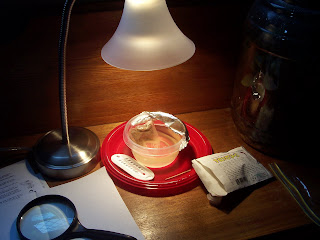 From the HippoCampus Teaching Biology blog:
From the HippoCampus Teaching Biology blog:November 24, is the 149th anniversary of the publication of On the Origin of Species, a book that launched a scientific revolution and forever altered our understanding of who we are. In the last century and a half, both the book and its author have become icons, household names that most people recognize but many only know in a superficial and caricatured way. Charles Darwin, morose old man with a big white beard, who took a boat ride one day and got hit in the head with a finch, thus discovering evolution. The theory of evolution, aka survival of the fittest, except it must not be true because it’s still only a theory after all this time.
HippoCampus is a project of the Monterey Institute for Technology and Education whose is to provide "high-quality, multimedia content on general education subjects to high school and college students free of charge." According to their website, HippoCampus content has been developed by "some of the finest colleges and universities in the world" and contributed to the National Repository of Online Courses, which makes editorial and engineering investment in the content to prepare it for distribution by HippoCampus.
The HippoCampus Biology home page has links to the blog, other interesting-looking biology content -- and a complete, free, online AP Biology course.
Although AP (Advanced Placement) courses are a useful way to earn some college credit while still in high school, I've decided not to pursue them for my kids. In school-school they indicate that the student is willing to work harder on what is billed as a higher level course. But for us as homeschoolers, it just means more hoops to jump through and another test to teach to. I'd rather devote my energies to hands-on activities, a variety of books and resources, and focusing on a few topics of interest to me and the kids.
On the other hand, who knows what we'll want down the road.
My quick impression the AP Bio course is that it consists of a fairly pleasant young voice reading a textbook, accompanied by related graphics. Despite the idea that AP classes are supposed to be for the creme de la creme of high school students, the content and its presentation seems to be at a middle school level (at least the introduction). In other words, it sounds more like learning software you'd see in the earlier grades than a college lecture.
If you try this Hippocampus AP course (or any other) I'd be interested in hearing what you think!

















